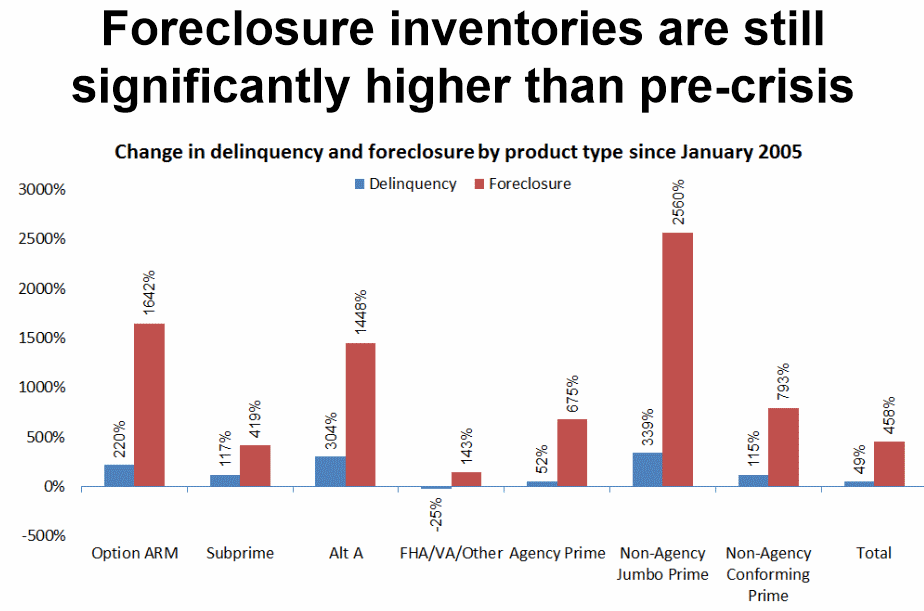Among the areas of focus in the most recent edition of Lender Processing Service's (LPS) Mortgage Monitor are the metrics surrounding the market for refinancing. In the report, which covers data for April which precedes the recent interest rate increases, LPS first looked at prepayment speeds which it calls a good historic indicator of refinance activity. It found that these speeds, while down from recent highs, remained elevated, particularly among older loan vintages and lower credit borrowers. This is consistent with the view that lenders--having tightened guidline overlays shutting less qualified borrowers out of the market when rates bottomed--would eventually "move on" to loan files that weren't considered low-hanging fruit until rates began rising in 2013. The relatively hotter purchase market has also resulted in prepayments from move-up buyers selling their previous homes.
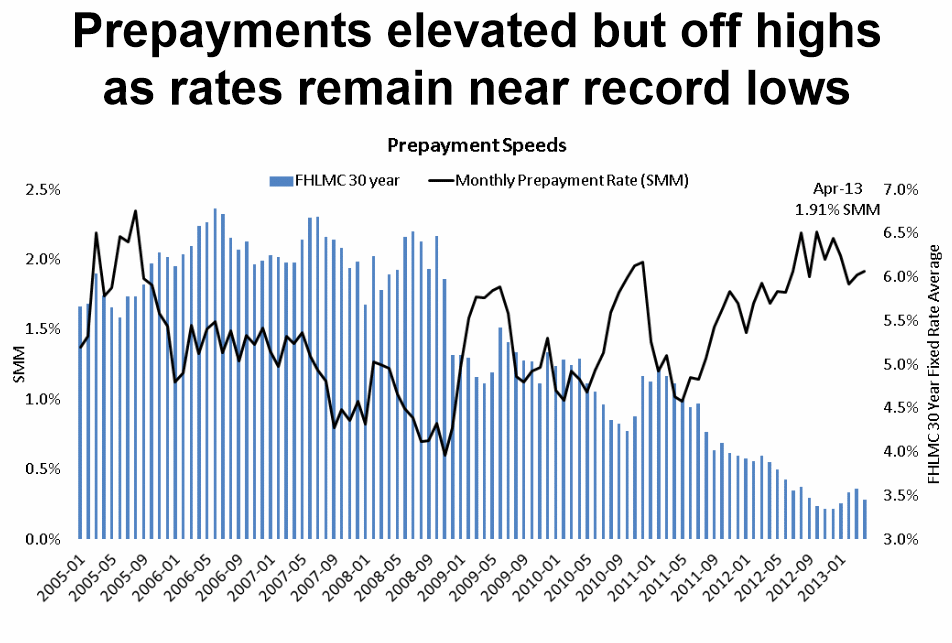
Post 2009 loans are showing signs of potential burnout meaning borrowers have already taken maximum advantage of the current rate environment. The remaining loans are not eligible for HARP which is limited to pre-2009 loans, and would not have had time to build up sufficient equity cushions to protect them from 2009-2012 price declines.
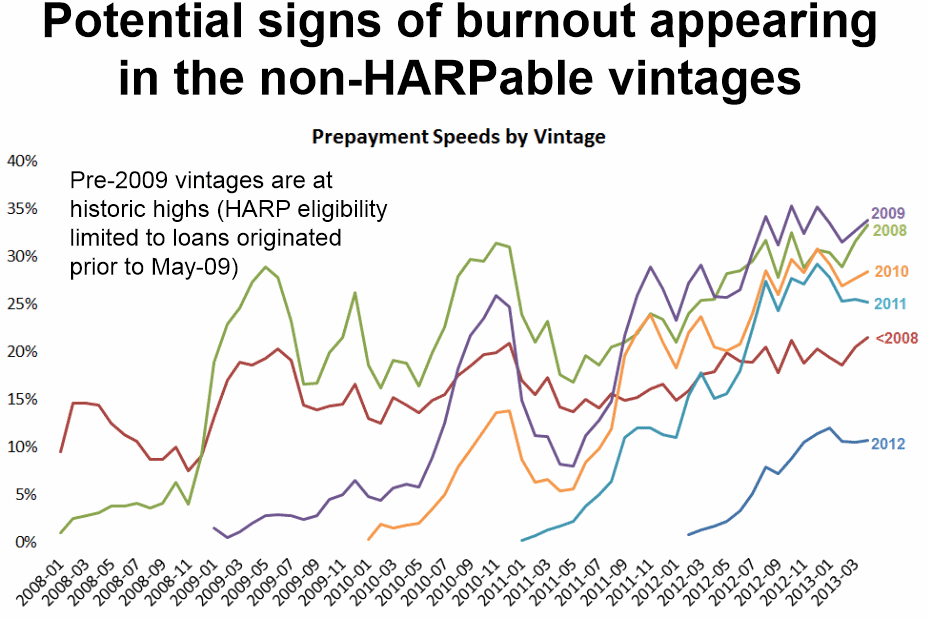
Prepayment speeds for lower credit borrowers have also been increasing. Borrowers with credit scores under 720 paid their loans off at a rate that increased by 20 to 30 percent on a year-over basis compared to 7 percent among borrowers with scores over 720.
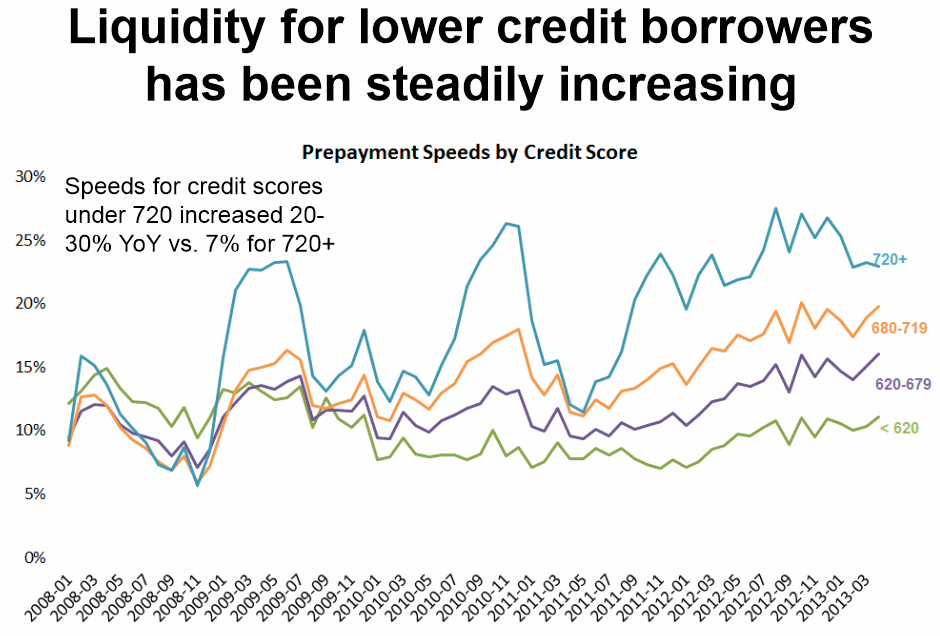
Despite all of the refinancing activity, LPS finds there are still significant numbers of loans that could benefit from refinancing. About 18 percent of outstanding loans appear to have "refinanceable" characteristics.
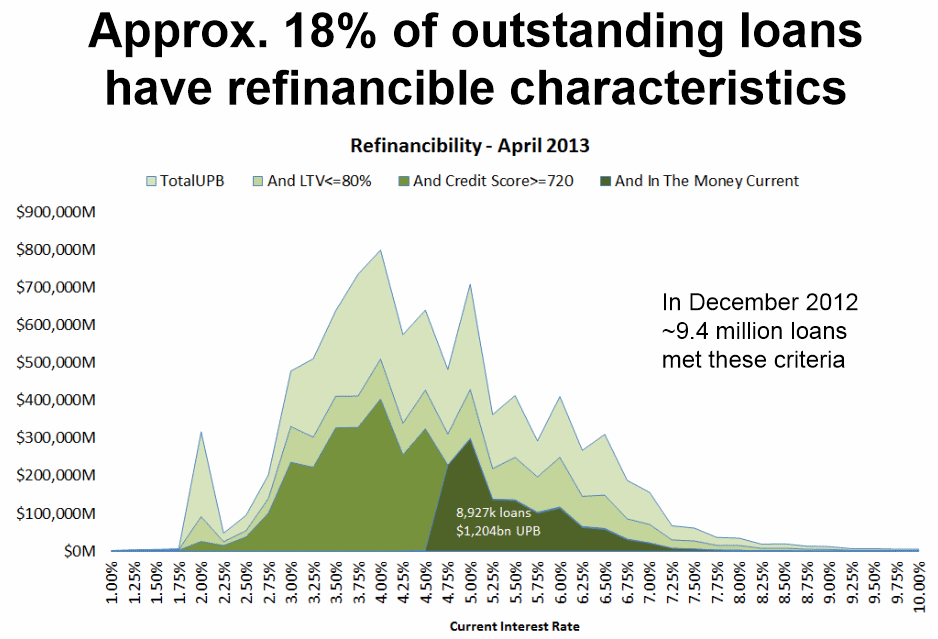
The Monitor also found that the rate of foreclosure sales in judicial process states hit the highest point since 2010 and their are signs that the foreclosure inventories are beginning to decrease in those states. But the amount of time the property remains in the foreclosure inventory continues to grow as does the disparity in timelines between judicial and non-judicial states.
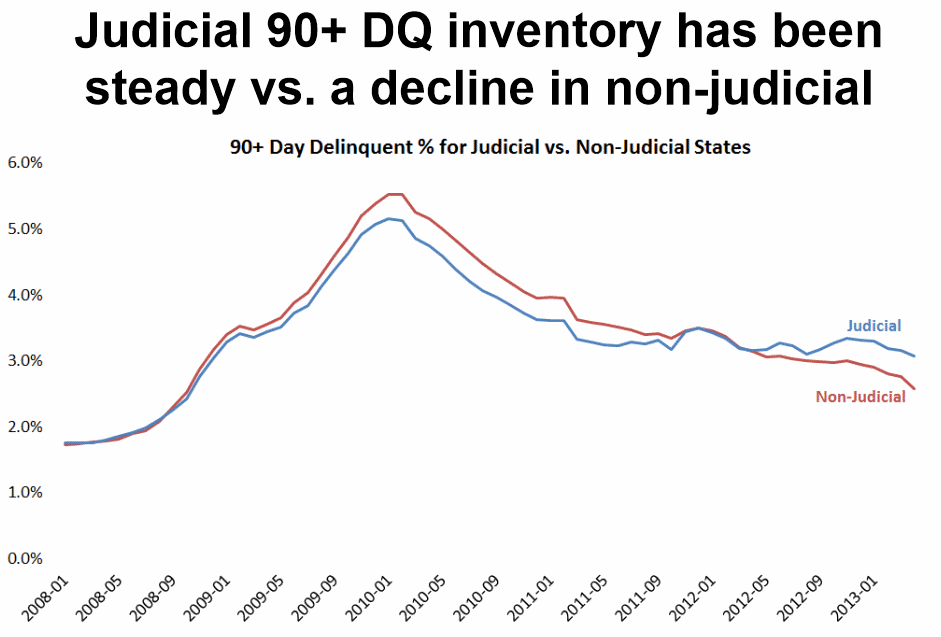
As was reported earlier in the LPS "First Look" release last month, the U.S. delinquency rate fel by 5.81 percent between March and April to 6.21 percent and the pre-sale foreclosure inventory rate was down by an almost equal amount - 5.83 percent to 3.17 percent. LPS points out that the December to April seasonal decline in delinquencies - 13.4 percent - was the largest since 2004 and the deterioration ratio, i.e. loans getting worse vs. better, has been below 1.0 for 9 of the last 10 months.
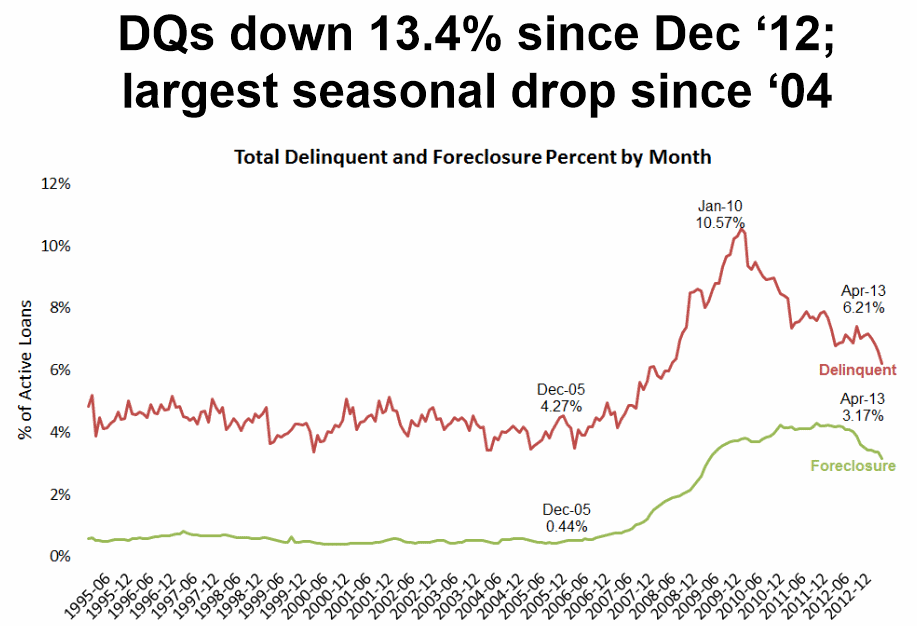
However, while delinquencies are resolving, foreclosure inventories are still significantly higher than pre-crisis across all products, in most cases stunningly so.
